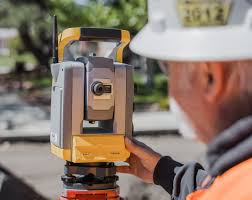Land surveying is an indispensable element in the realm of real estate, construction, and infrastructure development. The precision and accuracy of surveys lay the foundation for successful projects, making the role of certified cartographers crucial. In this article, we delve into the world of certified cartographers, exploring their expertise, the significance of their work, and how it shapes the landscape of modern development.
The Essence of Certified Cartographers
Certified cartographers, also known as land surveying, are professionals equipped with specialized knowledge in measuring and mapping the Earth’s surface. Their expertise extends beyond mere measurement; they interpret and analyze spatial data, providing critical insights for various industries.
Precision in Measurement
The cornerstone of a certified cartographer’s work is precision. Employing advanced technologies such as GPS, total stations, and aerial imagery, they meticulously measure distances, angles, and elevations. This precision is pivotal in delineating property boundaries, creating topographic maps, and facilitating construction planning.

Expertise in Mapping
Certified cartographers are adept at translating complex geographical data into comprehensive maps. These maps serve as invaluable tools for architects, urban planners, and engineers. The meticulous detailing in their maps aids in decision-making, ensuring that projects align seamlessly with the geographical landscape.
The Importance of Certified Cartographers in Real Estate
In the realm of real estate, property boundaries must be clearly defined to avoid disputes and legal complications. Certified cartographers play a pivotal role in conducting boundary surveys, precisely outlining property lines. This not only safeguards the interests of property owners but also streamlines real estate transactions.
Facilitating Construction Projects
For construction projects, accurate land surveying are indispensable. Certified cartographers provide crucial information on the topography and characteristics of the land, enabling architects and engineers to design structures that harmonize with the environment. This ensures the sustainability and longevity of the constructed infrastructure.
The Technological Edge of Certified Cartographers
In the digital age, certified cartographers leverage cutting-edge technologies to enhance their capabilities.
GPS Technology
Global Positioning System (GPS) technology has revolutionized land surveying. Certified cartographers utilize GPS devices to pinpoint locations with unparalleled accuracy, expediting the surveying process and improving overall efficiency.
Drones in Surveying
The integration of drones in land surveying has opened new frontiers. Drones provide aerial views, capturing detailed images of vast landscapes. Certified cartographers harness this technology for large-scale surveys, delivering high-resolution data for precise mapping.
Education and Certification
Becoming a certified cartographer requires a combination of education and practical experience. Most professionals in this field hold a degree in land surveying, geomatics, or a related discipline. Additionally, acquiring a license is essential, ensuring that certified cartographers adhere to industry standards and ethical practices.
Conclusion
In the intricate tapestry of land surveying, certified cartographers stand as the master weavers, intricately detailing the landscape with precision and expertise. Their role is pivotal in shaping the foundations of our communities, ensuring that development unfolds seamlessly and sustainably.
The expertise of certified cartographers is not only a testament to the evolution of land surveying but also a driving force behind the success of various industries. As we navigate the complexities of modern development, their precision, mapping skills, and technological acumen continue to be indispensable. For a world that thrives on accurate data and informed decision-making, certified cartographers are the unsung heroes, quietly but significantly shaping the contours of our progress.








Comments 1